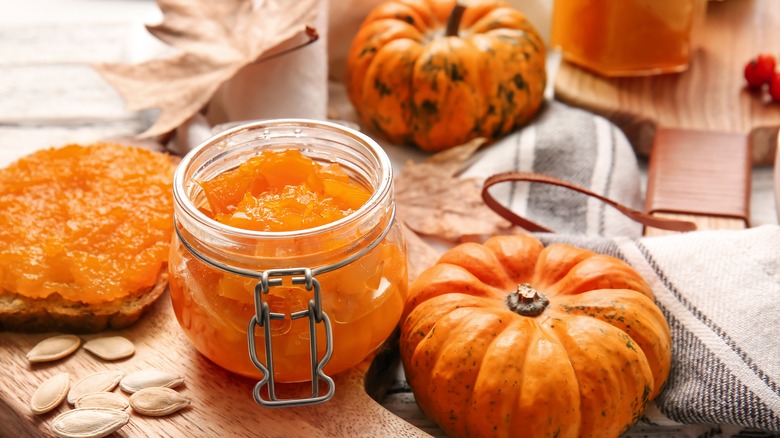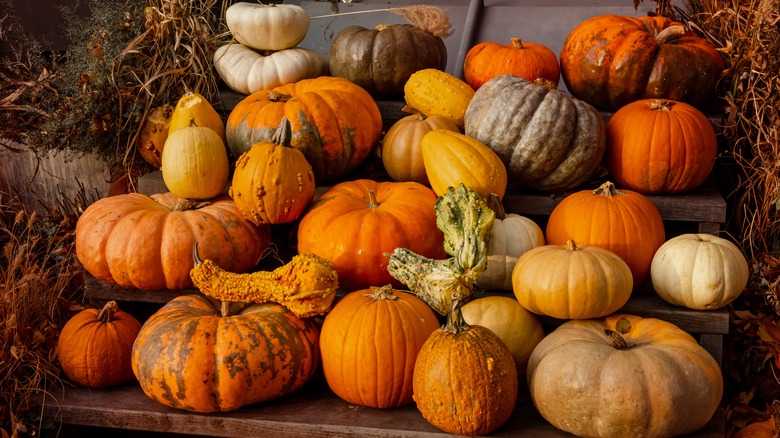The Important Step To Follow When Picking Out Pumpkins For Cooking
Pumpkins are great for carving and for enhancing the autumn ambiance in a home or office, but they're even better for whipping up delicious treats.
These squash are classified as a fruit, though they're often used in a variety of savory recipes (per Agrilife). Lomi notes that pumpkin pie, soup, bread, stock, and even a variation of Starbucks' pumpkin spice latte can all be made with a humble pumpkin. The seeds inside can also be roasted for a tasty fall snack.
Some of the above dishes may result in disaster if the "wrong" type of pumpkin is used. For instance, green pumpkins are best suited for soup while winter squash is one of the best picks for pumpkin purée (per Our Plant Based World). The source also notes that heaviness, firmness, and a bruise-free exterior are all factors to look for in high-quality pumpkins for cooking.
But there's one more important thing to look for when picking out pumpkins — and all you have to do is listen for it.
Hollow sounds are best
Believe it or not, sounds are actually a crucial aspect of pumpkin picking. In an interview with "pumpkin experts," TheKitchn notes that you'll likely find lots of seeds within pumpkins that sound hollow. Specifically, you're listening for a "low sound" with a sense of emptiness, as defined by Macmillan Dictionary. Conversely, SF Gate explains that a pumpkin that "sounds solid" is probably not fully ripe yet.
As SF Gate explains, all you have to do is hold the pumpkin and tap it with your hand. If it sounds hollow, then it's ripe and ready to find a home, per Almanac. And if you're looking for pumpkin varieties with the most seeds, Garden Guides suggests "naked seed" options, like "snack jack." Furthermore, these hulless pumpkins have a "thin membranous seed coat" around their pumpkin seeds, which makes them edible as a whole, via Victory Seed Company.
Granted, this "hollow sound" trick doesn't work for all kinds of pumpkins. As Rural Sprout explains, pie and heirloom types should produce solid sounds instead of hollow ones because their flesh is thick and their seed quantity is low. Hollow sounds could also indicate diseases and rotting on the inside, so it's best to look for other signs to make sure these types of pumpkins are ripe and safe to consume.
So whether you're making a classic pumpkin pie or a savory pumpkin dish, be sure to look for pumpkins with hollow sounds, which is (usually) a sign of ripeness and lots of seeds.

